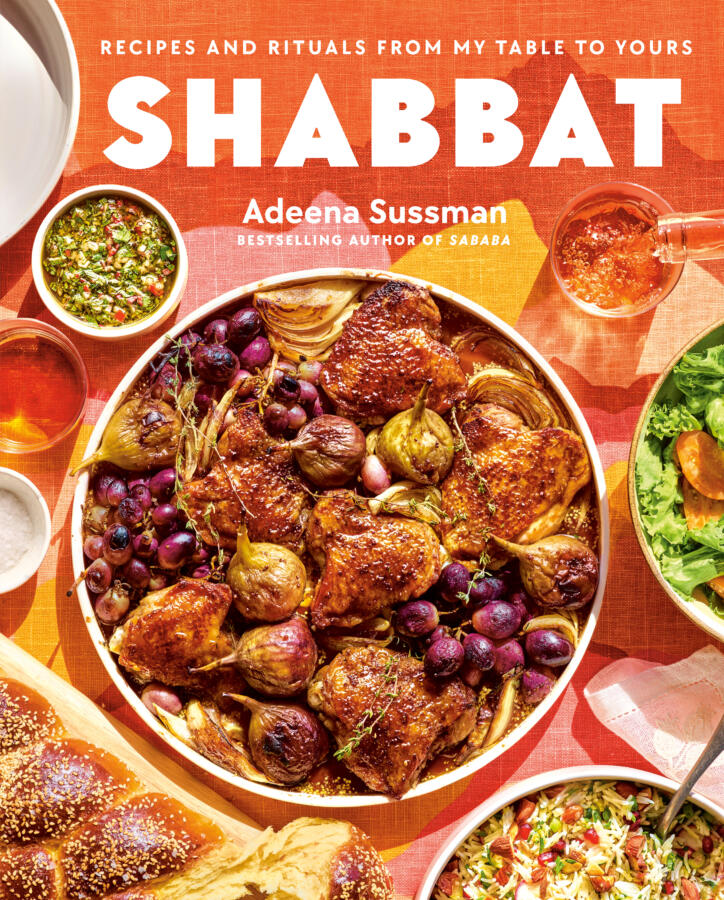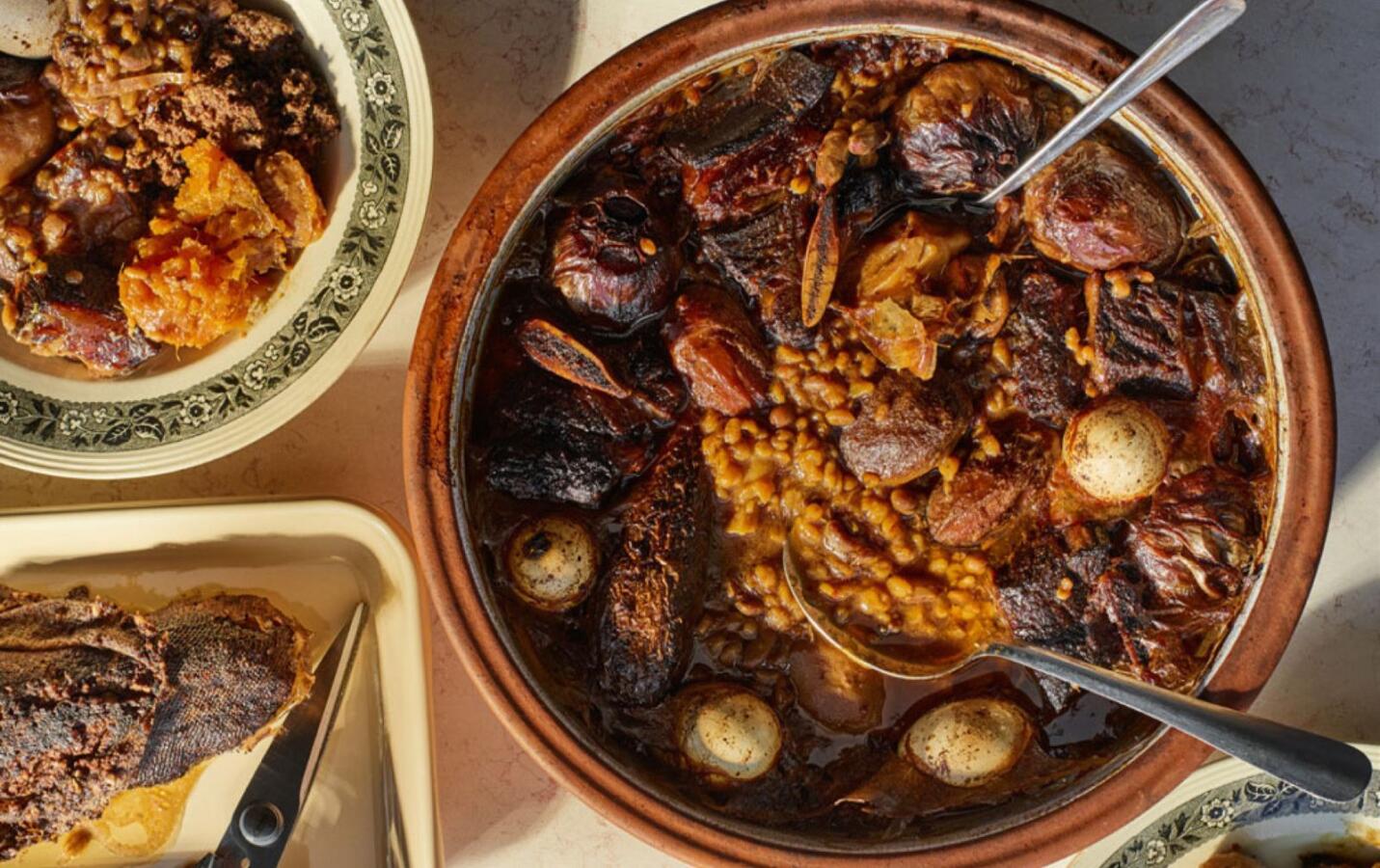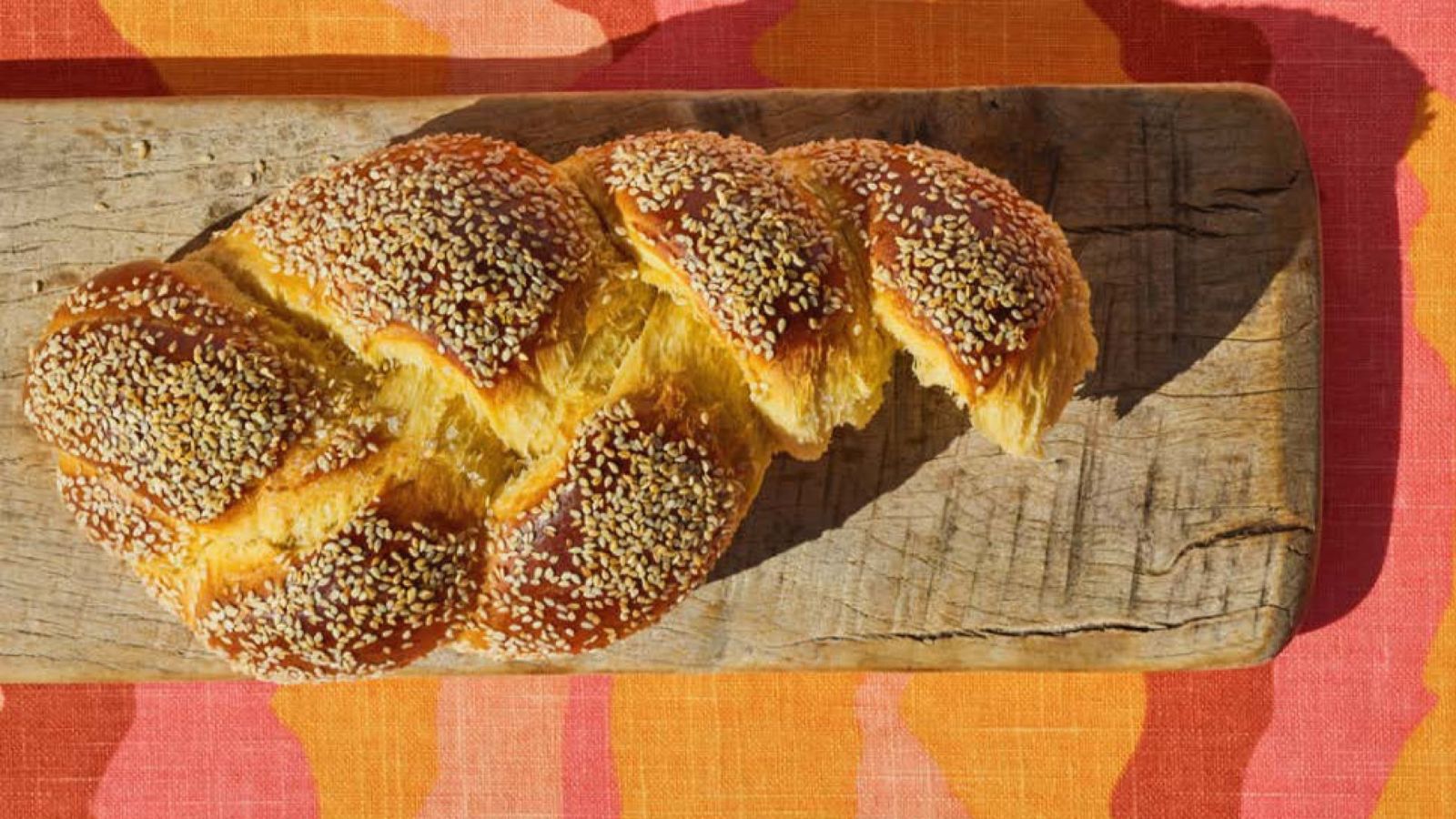Four years ago, Adeena Sussman’s book about contemporary Israeli cuisine, “Sababa,” came out, and honey harissa, quick and easy hummus and jeweled rice became staples to her 100,000+ readers. Now, Sussman has found new inspiration in the foods and traditions of Shabbat, the Jewish day of rest, which Sussman describes as a weekly national holiday in heז adopted home of Israel.
“Shabbat: Recipes and Rituals from My Table to Yours” the cookbook is filled with Sussman’s memories of Shabbat in her childhood in Palo Alto, CA, and some of the simple, flavorful and hearty foods her mother, Steffi, to whom the book is dedicated, prepared for the family, friends and strangers at her table. Those dishes are among the 130+ recipes that fill this lush, beautifully written and magnificently photographed ode to the global foods of Shabbat.
Whichever recipe you choose to make from “Shabbat,” Sussman’s hope is that you use the book as “a guide to entertaining in a relaxed fashion, with a Jewish inflection.” To Sussman, Shabbat food is about the feeling it evokes in the cook or the eater.
“Shabbat food is any food that gives you an opportunity to unplug, bring people around the table, put your phone in the corner, talk to friends,” she told The Nosher. “Maybe it’s easier to prepare in advance, maybe it is long cooked but not necessarily. It is about food that infuses rest and relaxation into your life.”
The Nosher celebrates the traditions and recipes that have brought Jews together for centuries. Donate today to keep The Nosher's stories and recipes accessible to all.

The cover image, designed by Nurit Kariv and shot by Dan Perez with his signature natural light shadows, sets the stage.
The photo, said Sussman, “had to have the gravitas of Shabbat without being too intense or overly meaningful in a traditional way. It had to be beautiful and festive and have a bit of Israeliness to it because that is just the way that I live. The figs and the grapes, the tablecloth and the fonts have a retro but modern feeling, very homey but also very fresh.”
Once inside, the signature Adeena Sussman warmth coupled with the precision of her brightly flavored, inventive recipes keeps you engaged.
“You always know if you are cooking something of Adeena’s, it is going to work and it is going to be something you will want to make over and over,” said Lucia Watson, her editor at Avery, an imprint of Penguin Random House, who published the book.
“Her books,” she continued, “are big hugs. So full of heart. You just want to be with her.”
Those who dive behind the book’s cover and cook along with Adeena will find takes on traditional Ashkenazi dishes: cholent, kugel and chopped liver, both a vegetarian version and one made with chicken liver, made yet more special thanks to the Adeena touches and twists for which she is known. The apple kugel is sweetened with caramel; the array of cholents includes a vegan version with “lots of umami,” says Sussman, made hearty with beans, sweet potatoes and cauliflower and topped with her hot sauce, dubbed “schug-a-churri,” part Yemenite zhug, part chimichurri.
“People have a perception of what a Shabbat recipe is in the United States,” said Sussman, who was born and raised in California and spent 20 years living in New York before her move to Tel Aviv. “In Israel, there is a wider picture because of the make-up of the people here.”

Her Shabbat table is often multi-ethnic, covered with the likes of Ethiopian bread, Ashkenazi cholent or Moroccan carrot salad. Many of the featured dishes were passed to Sussman by home cooks who trusted her with them. The “Hamin Ta’amer,” a Moroccan slow-cooked stew made with a beef meatloaf flavored with cinnamon, cloves and ginger and mixed with ground nuts, was shared with Sussman by her friend Avichai’s mother who learned to make it from her Moroccan-born mother.
“How did most people in my book learn these dishes?” asked Sussman. “They learned them from their mothers when cooking for Shabbat! Whether it is unwitting or intentional, it’s a passing on of tradition to the next generation through culinary osmosis. You are feeding people, teaching people about your traditions, nurturing people, you’re making sure that your kids come home. That’s a big part of it. Friday night dinner.”
In “Shabbat,” Sussman sought to balance familiar dishes with new culinary traditions she’d learned in Israel. Like her grilled steak salad, where steak is marinated with tamarind paste and pomegranate molasses, and dressed with a vinaigrette made with grated tomato, a classic Yemenite-Jewish condiment.
Sussman loves every one of her recipes but one that she hopes everyone will try is her “Golden Challah.”
“My new challah recipe,” said Sussman, “is so delicious and simple and the pinch of turmeric gives it that golden sunshine color. I hope everyone becomes super comfortable making challah and it becomes something they can do with their eyes closed.”
To best convey the diversity of Shabbat practice in Israel, Sussman includes profiles of Israeli Jews from a variety of backgrounds and Shabbat observance. You will meet bakers and cooks in Bnei Brak, an ultra-Orthodox community not far from Tel Aviv, in their pre-Shabbat frenzy; food stylist Nurit Kariv in her home as she serves brunch on Saturday morning; and Heddai Offaim, a farmer, restaurateur and entrepreneur as he leads his friends and family through Havdalah, the mystical ceremony that marks the end of Shabbat. Through her stories and recipes, Sussman’s goal is to help “everyone find a place at the Shabbat table and make it their own, through their own food and experience.”
That generous spirit is one of the traits that her friend and colleague, James Beard award-winning chef, restaurateur and cookbook author, Michael Solomonov, values most.
“In “Shabbat,” he said, “Adeena invites you into Israel, into Shabbat dinners, into the homes, into the shuk. You feel like you are there, literally, with her.”
Sussman, said Solomonov, is a cheerleader for everyone around her. “She is,” he said, “really as good as it gets.”



